Bis Johanni – nicht vergessen – sieben Wochen Spargel essen!
The Asparagus season in Germany starts towards the end of April and ends on the 24th of June (St. John the Baptist Day)
Most Germans eagerly await Spargelzeit and they eat around 125 000 tonnes of asparagus each season.
It is very important to them to buy only German-grown asparagus.
Harvesting asparagus is very labour-intensive, and is mostly done by seasonal workers.
Traditionally it is served as a very simple dish, with boiled potatoes, ham and hollandaise sauce.
Varieties
White and green asparagus are the same vegetable.
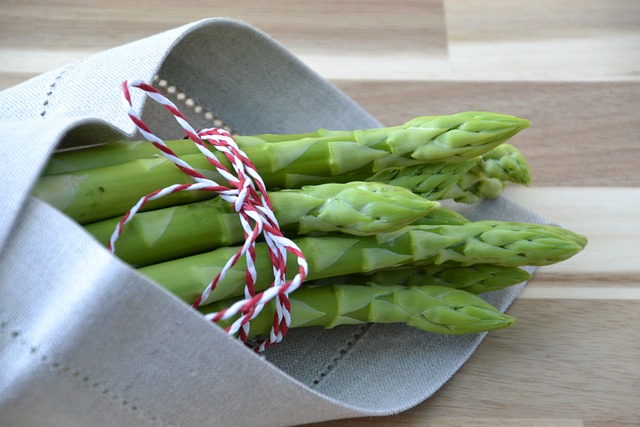
Green Asparagus
Green asparagus is grown above the ground and is exposed to sunshine
- "Grassy" Flavour
- Thinner Stalks
-
Does not need peeling
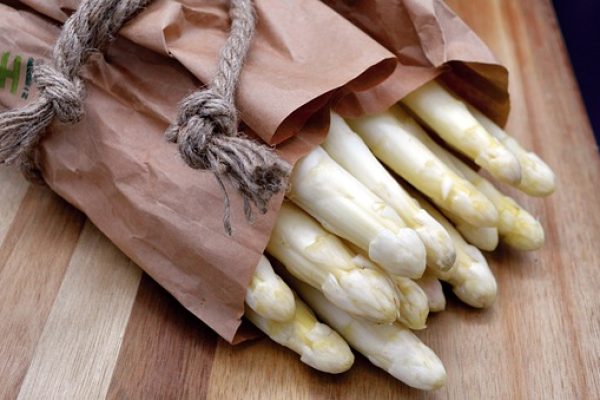
White Asparagus
White asparagus is grown under mulch and dark plastic, so it gets very little sunshine and no photosynthesis.
- Delicate and sweet flavour
- Stalks are thicker
- Skin tends to be tougher and needs peeling
Buying
- Stalks should be firm to the touch.
- Pay attention to the tips (buds). They should be firm and tightly closed.
- Dry or yellow tips indicate that it is already old.
- Avoid mushy tips.
- Purple tips – The colouration happens during a short period when the tip breaks through the soil, catches some sunlight and turns purple as a result, just before it is harvested.
- The serving size per person is around 500g
Asparagus can be bought at farmer’s markets, greengrocers, small stalls along the road or in normal grocery shops.
The small stalls along the road often sell strawberries as well, as these are also in season.
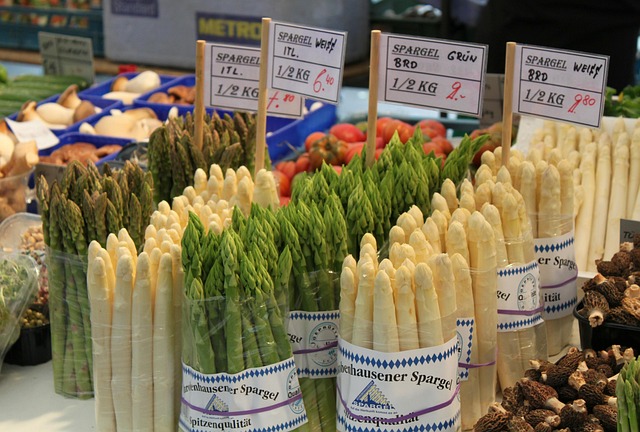
Grades
Asparagus is a delightfully succulent and nutritious vegetable that is highly in demand in Germany. This exquisite veggie is sold by the following grades in Germany.
Klassen Extra
Criteria
Klasse I
Criteria
Klasse II
Criteria
Bio Spargel
Storing
Asparagus tastes best when cooked on the day you buy it. If you are not going to prepare them on the same day, you could store them in a shallow airtight container in the fridge.
You can also store them in the fridge by wrapping them tightly in foil or plastic wrap. They should last 3 – 5 days like that.
Others suggest storing them standing up in a glass jar with some water inside (around 2.5 cm – enough to cover the ends). Then loosely cover it with a plastic bag and store it in the refrigerator for about a week.
Preparation
When preparing white asparagus, get rid of the woody ends. You can either cut them off or break them off.
The following video explains how to prepare and cook asparagus.
Green Asparagus usually don’t need peeling.
White asparagus have thicker stalks and must be peeled. You can buy a special Asparagus peeler (Spargeschäler) to make the job easier. Here is an example of such a peeler on Amazon
Some of the bigger shops have machines that peel them for you.
Recipes
The most classic way to eat white asparagus in Germany is with boiled potatoes, Ham and hollandaise sauce.
I love baking them wrapped in foil in the oven (see how to do it here), they taste much better that way. You can also throw them on a braai if you like. A surprising ingredient in most recipes is a bit of sugar, whether you bake them in foil or cook them in water.
Delicious recipes can be found on the Essen und Triken and Chefkoch websites. For English recipes look on Germanfoods.org and My Dinner for a classic recipe.
Asparagus Road
The 120 km long Asparagus road starts in the city of Schwetzingen. They claim to be the “Asparagus Capital of the World” and hold an annual Spargelfest.
The route then passes through Karlsruhe, Bruchsal and ends in Rastatt which has the biggest asparagus farm in Europe.
Many towns/regions crown an annual asparagus queen (Spargelköningin) who reigns over the festivities.
Related content
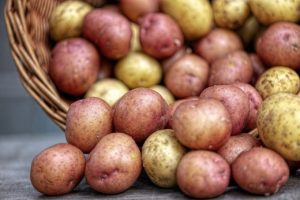
Potatoes
Potatoes are staple food in Germany. You will find it as a side to almost any dish you order in a restaurant. The good news

Substitutes and Food Info
There are countless South African products that can be conveniently purchased online today. In those rare instances where you can’t find what you’re looking for
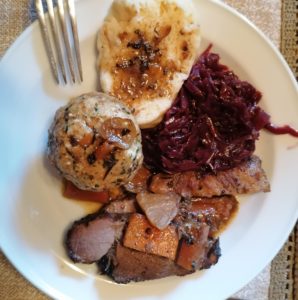
German Cuisine and Recipes
Many will describe German food as hearty, heavy and unrefined. Comfort food comes to mind, as many dishes are based on starch. But I think

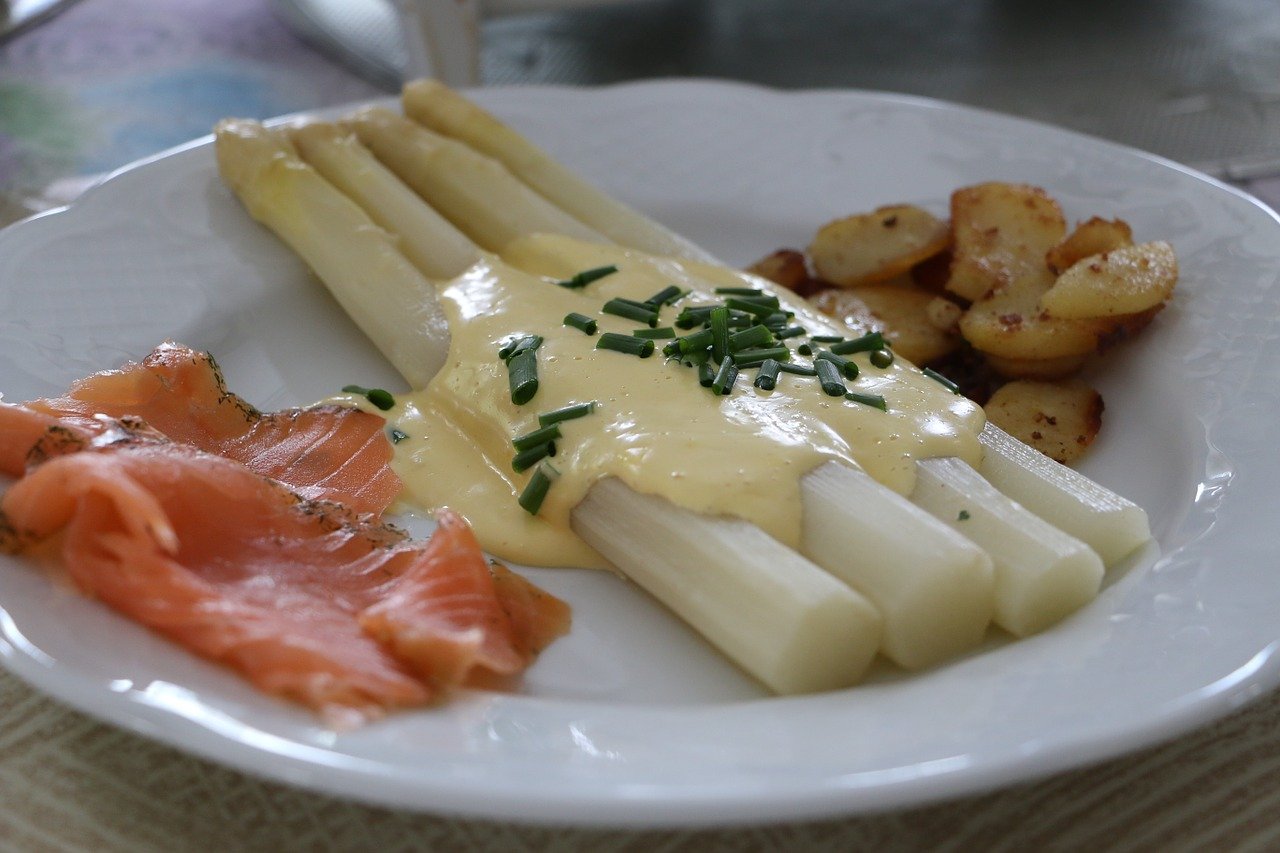

You must be logged in to post a comment.